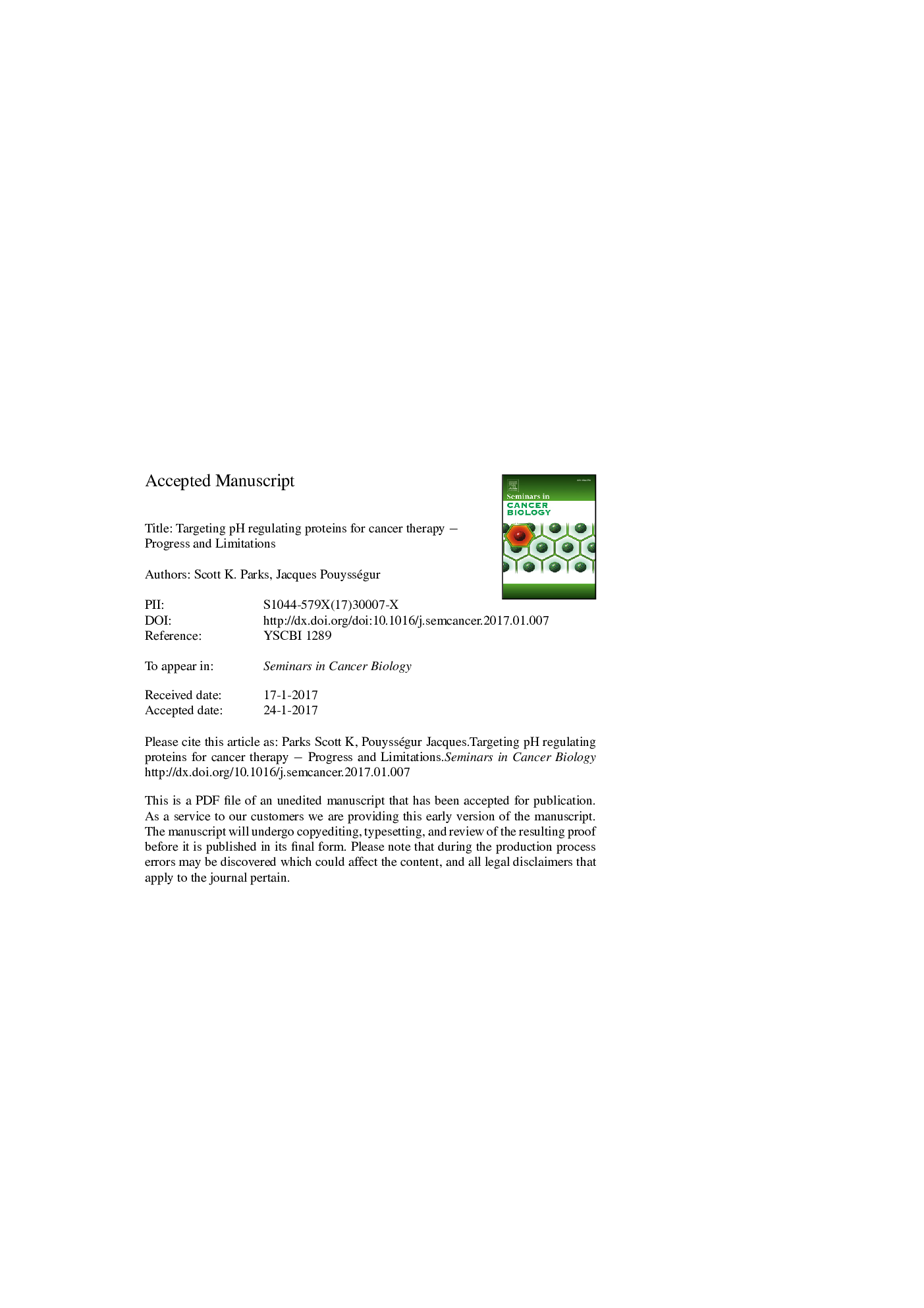| Article ID | Journal | Published Year | Pages | File Type |
|---|---|---|---|---|
| 8361938 | Seminars in Cancer Biology | 2017 | 29 Pages |
Abstract
Tumour acidity induced by metabolic alterations and incomplete vascularisation sets cancer cells apart from normal cellular physiology. This distinguishing tumour characteristic has been an area of intense study, as cellular pH (pHi) disturbances disrupt protein function and therefore multiple cellular processes. Tumour cells effectively utilise pHi regulating machinery present in normal cells with enhancements provided by additional oncogenic or hypoxia induced protein modifications. This overall improvement of pH regulation enables maintenance of an alkaline pHi in the continued presence of external acidification (pHe). Considerable experimentation has revealed targets that successfully disrupt tumour pHi regulation in efforts to develop novel means to weaken or kill tumour cells. However, redundancy in these pH-regulating proteins, which include Na+/H+ exchangers (NHEs), carbonic anhydrases (CAs), Na+/HCO3â co-transporters (NBCs) and monocarboxylate transporters (MCTs) has prevented effective disruption of tumour pHi when individual protein targeting is performed. Here we synthesise recent advances in understanding both normoxic and hypoxic pH regulating mechanisms in tumour cells with an ultimate focus on the disruption of tumour growth, survival and metastasis. Interactions between tumour acidity and other cell types are also proving to be important in understanding therapeutic applications such as immune therapy. Promising therapeutic developments regarding pH manipulation along with current limitations are highlighted to provide a framework for future research directives.
Related Topics
Life Sciences
Biochemistry, Genetics and Molecular Biology
Biochemistry
Authors
Scott K. Parks, Jacques Pouysségur,
